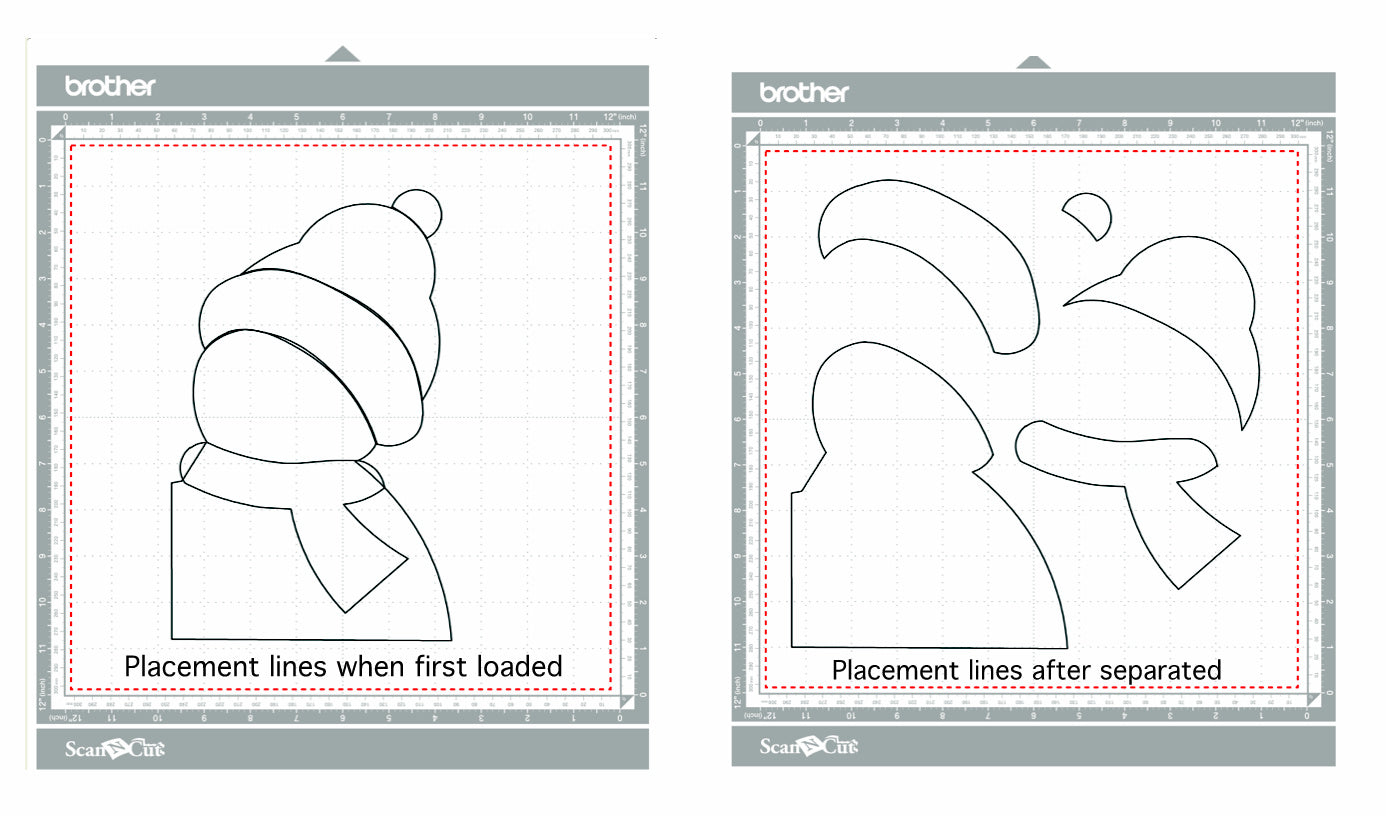Did you know that in addition to receiving multiple formats for multiple hoop sizes with Sweet Pea Designs, you also receive .fcm and .svg files for your cutting machines?
I use the .fcm files to cut my appliqué pieces on my Brother ScanNCut using Freezer Paper Sandwiches.
My process has 3 steps to it.
Step 1 - .fcm files and Placement Lines
Placement lines in an embroidery design are the key to cutting appliqué pieces.
Older designs from Sweet Pea included the entire design in the .fcm file so I take those into the Brother Canvas free online app to isolate the placement line. (Embroidery software can also do this.)
The newer .fcm files include only placement lines so those can be loaded directly into your ScanNCut - with one exception.
For the older files, login to Canvas, click on New. Click on the SVG icon. On the next screen select your .fcm file, and click upload.

Start clicking on the layers to drag the design apart.
Delete everything other than the placement lines.
If needed, reference the Sweet Pea instructions to identify the placement lines.
For the Mitten Table Runner there are two: the mittens and the cuffs. There are 3 lines associated with each - the placement line, the stitch down line, and the satin or raw edge stitching. The placement line will be the bottom one.

When only the placement lines remain, they may need to be ungrouped. To ungroup, click on each set of objects, click on edit, and then click on ungroup.

Download the file to your computer.
Click on Download.
Transfer to your computer/USB stick or transfer it wirelessly.

Even though newer files can be loaded directly into the ScanNCut, you may need to take them into Canvas to separate or ungroup the placement lines.
For example, the .fcm file for the Let It Snow Table Runner has several placement lines that are touching each other. The ScanNCut sees it as a single object. So I quickly take the file into Canvas to separate.

Step 2 - Prepare Your Fabric
When I first acquired my ScanNCut, I used the High Tack Adhesive Fabric Support Sheet, a dedicated fabric cutting blade, and a dedicated fabric mat.
Since then I have discovered the Freezer Paper method for cutting appliqué.
I no longer need the high tack sheet nor the dedicated blade and mat. My mat also collects less fiber fuzz and little strings using the sandwiches.
Iron your fabric.
Then make a sandwich by placing the fabric inside two pieces of freezer paper that are least 1/2 inch larger than the piece of fabric.
The shiny sides face "inside" - i.e. the shiny sides touch the front and back of the fabric. That leaves the dull side of the freezer paper on the outside - both top and bottom.
Iron the sandwich. This will temporarily fuse the freezer paper all around the fabric.
Your sandwich is now ready for the ScanNCut.

Step 3 - Cutting the Appliqué Shapes
Load the file with your placement lines into your ScanNCut.
You need to increase the size of the appliqué shape so that it is slightly larger than the placement line to ensure that it stays in place when you do the stitching line to secure it.
In many cases a 2mm increase in size will do the trick.
You can change the unit of measure to mm in tools (you can also do this in inches but adding 2 to something is easier for me than adding a fraction).
Select an object and go to the editing screen.
Make sure the Aspect Ratio icon is unchecked. Add 2 to the height - this will auto change the width. Do this to each element that you're going to cut.

Adjust your cutting blade depth.
I start at 5 and tweak as needed using the Test option (my pressure is 5 and speed is 1).
Use the Background Scanning Function to scan the mat with your fabric on it.
I scanned both a mitten and a cuff sandwich on the same mat. Because objects are ungrouped, I can move each individually for a good fit on my fabric.
Add the test cut.
If the test cut is good then finish cutting. If not adjust the blade depth until it cuts cleanly.
Then finish cutting the appliqué.

Peel away the freezer paper!
Your appliqué is ready for embroidering.
Here are my mitten blocks!!

Summary
Once I discovered Freezer Paper Sandwiches, I and my ScanNCut have become best buddies. I now use it for cutting all but the simplest appliqué pieces for designs!
Note: Freezer paper is a thicker paper with a plastic or wax coating on one side. (Parchment paper has no coating. Wax paper has coating on both sides.) It is readily available in the United States.
Hopefully embroiderers in Australia, Europe, Canada, and other countries can find it to try out Freezer Paper Sandwiches with their ScanNCut.
For any further questions please email us at sweetpeanash@gmail.com


Leave a comment
All comments are moderated before being published.
This site is protected by hCaptcha and the hCaptcha Privacy Policy and Terms of Service apply.